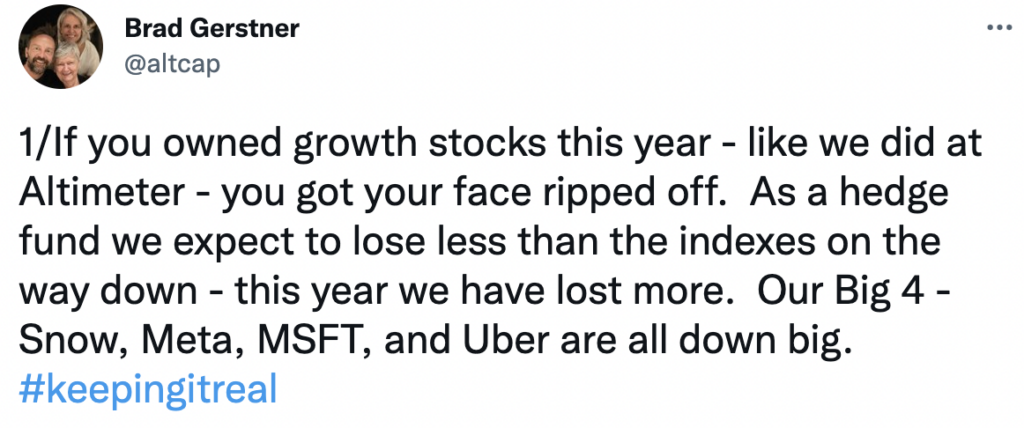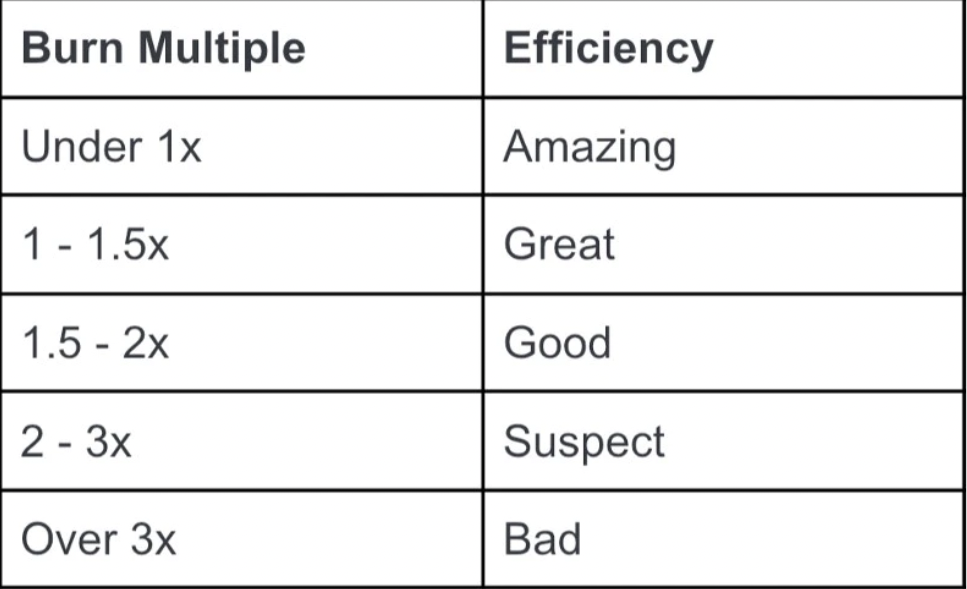
How to Navigate the Downturn With Accurate Revenue Data
How can founders achieve sustainable growth to prepare themselves for a downturn? Nektar's CEO Abhijeet Vijayvergiya shares some advice.
“No one can predict how bad the economy will get, but things don’t look good.”
This was the first point in the email sent out by the top start-up accelerator Y Combinator to its founders in May 2022.
Y Combinator isn’t the only one publishing a “black swan” event memo for its portfolio companies.
- VC investment firm Reach Capital advised start-ups to “account for an extremely capital constrained environment, even for companies with strong growth rates.”
- Sequoia alerted its start-ups to cut costs or face a ‘death spiral.’
- “This market could still be choppy 15 months from now. So looking at 30 months of runway is a better goal for folks to have,” warned Craft Ventures.
- “Reevaluate your valuation, understand your burn multiples, and build scenario plans” is the advice to start-ups by a16Z.
All this comes in the light of the current downturn in the market. Geopolitical tensions, rising inflation, supply chain disruptions and other sources of market volatility has caused a shift in global businesses.
Public markets have been struggling to adapt to these developments and have seen sharp corrections to valuations. The uncertainty of public markets has trickled down to the start-up ecosystem.
While SaaS companies are considered less risky with predictable business models, the downturn has still plummeted tech stock valuations.

Fast-moving, late-stage capital that was flushed across the ecosystem has suddenly evaporated. Most funds are watching their positions shrink in value by 40-50% in less than a year.
VC Money Wells Are Drying Up
As told by an investor in this article, “The firehose of money that has been pointed at these companies is going to be 70-80% smaller.”
The VC market is undergoing some massive changes currently. For example, Softbank said it was pulling back by 50-75% on start-up investments. Tiger Global lost $17 billion and has almost fully invested its latest fund.
The VC missives and current market conditions make one thing clear. Easy money is dead.
What Does This Mean for Start-ups?
Late-stage companies have their valuations at stake. They need to maximize their growth in this downturn to protect their valuation. Adding to revenue and conserving cash is extremely critical for them to ride this storm.
Some of these (late-stage) companies will not be able to raise their next round at all. What is clear is that their next round, if they can raise one, will be shorn of any froth and may even be a flat or a down round. If you are a seed stage company, the right thing to focus on is getting to the product market fit and building a repeatable sales model – as soon as possible.
Venktesh Shukla, Founder at Monta Vista Capital
Seed stage companies must get to a product market fit and build a repeatable revenue engine to survive this downturn. The longer they take to build a predictable revenue machine, the more vulnerable they will get.
With valuations dropping and VC’s pulling the plug on funds, companies are being forced to transition from a “growth at all costs” to a “cost saving at all costs” model. This is already happening in the form of massive layoffs that have been sweeping the tech industry since May. As of mid June, more than 19,000 workers in the U.S. tech sector have been laid off in mass job cuts so far in 2022.
Are Job Cuts the Only Way to Extend Runway?
While cost-cutting in the form of layoffs might be the only option left with most founders, it is only a quick-fix to a seemingly larger problem facing businesses right now.
To survive long-term, leaders need to look at ways to sustain their businesses. Two critical levers for sustained business growth are driving sales productivity and improving sales velocity. This will be key in unlocking an efficient growth flywheel for the SaaS business.
So what can revenue leaders do to achieve capital efficiency that protects them from the shocks of the downturn? One metric to look at is Burn Multiple. If CAC is high or sales productivity is low, burn will increase relative to new revenue, causing the Burn Multiple to worsen even though growth continues.

According to David Sacks, the rule of thumb for burn multiple is as cited above.
Do More With Less With The Right Data
By looking inwards at your own data and revenue systems, you can try to understand what factors contribute to poor burn multiple. And data lies at the heart of gaining visibility on where to make improvements, drive focus on leading indicators and fix the revenue funnel before it breaks.
However, the biggest pain point for most organizations today is the unreliable data that continues to sit in core systems like CRM. Organizations today are working in hybrid environments. They are using multiple tools and communication channels. This leads to scattered data and disconnected systems across distributed teams.
Revenue Operations teams are struggling to tie all of this together and fix the systems to surface the insights they need to help drive timely business decisions. And data inefficiencies are making companies lose as high as 30% of their annual revenue.
Sadly, most companies don’t even know of these hidden costs that bad data brings with it. In a Gartner survey, nearly 60% of companies said they don’t know how much bad data costs their businesses because they don’t measure it in the first place.
Clean and connected data can provide visibility into insights such as:
- Where are your reps spending time? Are they chasing the right deals?
- Are your Customer success team members meeting your top customers frequently?
- Are you losing more deals selling to technical buyer vs economic buyers?
- Is your sales team spending more time on low-margin customers?
- Are you reps ramping fast enough and enabling you to have a better payback period?
- Which stages are slowing down your revenue generation?
- Are your reps working on the hot leads that marketing generated?
- When was the last time your rep touch the committed deal this month?
And so on.
In order to answer the above and many other critical business questions, you need to improve your CRM data. This should be done with a focus of mapping the entire sales funnel and capturing all your revenue facing activities and touch points holistically and reliably.
You cannot afford to work with bad data, especially in a downturn. Make it your priority #1.
5 Data Areas to Urgently Prioritize on This Downturn
Here are the areas founders need to address urgently if their goal is to increase company cash flow, reduce churn and accelerate revenue.
1. Monitor and measure your data quality
Poor data quality is responsible for an average of $15 million per year in losses. The quality of your data defines the impact it can have on your bottom line. Unfortunately, most data in systems like CRM is either inaccurate, missing or stale.
Treat your data like a competitive asset and set up a process to continuously monitor and measure its quality. Ensure the data coming into your systems is reliable and trustworthy. Set up a process that automatically updates your data in real time, getting rid of anything that adds no value to your campaigns.
Better and complete data can give the direction and focus revenue teams need right now. For example, up-to-date, error-free and complete data from your CRM (like contacts, buying roles, meetings, emails and activities) can help you drive targeted ABM campaigns (and capture more quality leads).
2. Unify your existing GTM data to capture all key selling moments
Your GTM data is a goldmine. If captured effectively, the insights from GTM data can be used to drive revenue. But this cannot work if the data that your company captures is siloed in separate tech stacks across sales, marketing and customer success.
Disconnected data and tools results in poor GTM collaboration, lost revenue and missed growth opportunities. During this downturn, unifying the existing GTM data can be more valuable than burning cash for purchasing more tools or hiring more talent.
The need for unifying GTM data highlights the significance of revenue operations as an operating model. Revenue operations breaks traditional silos across your GTM funnel, and brings all your customer-facing departments together. Instead of looking at incoherent sets of data across multiple systems, sales, marketing and customer success teams can refer to one single source of unified GTM data.
This approach is key to generating more scalable and sustainable growth in a downturn. Revenue operations teams can act as GTM orchestrators to navigate this turbulent market.
3. Improve the ROI of your existing GTM tools
Tech stack continues to be a major source of investment for companies. An organization purchases 27 sales tools on an average. But 42% of sales teams fail to see a clear ROI on these tools.
With more than half of the tools in tech stacks going under-utilized, these investments can cause a significant drain of resources for any company. By unifying your hidden and scattered GTM data from all your existing tools, you can generate better insights and open more doors to bring in revenue.
It’s time to treat your revenue tech stack as critical infrastructure. Proactively mitigate the bad data problem by getting modern revenue tools that provide end to end visibility into the entire data lifecycle of a customer.
With complete, accurate and quality data, you can improve the ROI of your existing GTM tools, reduce churn from tools that add no value to your sales process, and drive clear end-to-end visibility for your RevOps teams.
4. Take data-driven decisions to increase win rates
It’s not the right time to change your core systems like CRM. Work with the data you already have by investing in AI solutions that take care of not just automation, but also add a layer of intelligence to your existing first-party data to help generate rich and accurate reporting and insights. These insights can be used to drive powerful decisions and take data-led actions across the GTM team.
Selective investment in the right AI solution can help you save a lot of money and time by helping you speed up the flow of data across the GTM funnel. Invest in tools that can be implemented quickly and which show you value from Day 1. Look for easy, no code implementations that harmoniously integrate with your existing systems and data, and silently work in the background to deliver powerful data-driven insights for your GTM team.
5. Drive rep productivity with the right tools
Sales reps are critical cogs in the revenue machine. The way you enable them in this downturn will directly impact your revenues. Leaders must create an environment where your reps can thrive.
According to Gartner, quota attainment drops by 20% in tough selling environments where:
- Leadership dictates how sellers should meet their sales objectives
- Leadership is disconnected from the reality sellers operate in
- Sellers just “go through motions” to meet their activity tracking requirements
Your sellers need to be given any ammunition they need to meet their targets, and in a way that elevates their productivity.
By giving sellers a unified view of their customer data, they will be freed from manual dependencies. This will help them focus more on the strategic part of their jobs such as doing more cold calls or booking more meetings.
Secondly, unified GTM data will help them get clear visibility on their deals and AI will recommend the next steps for any stalled deal. Coaching moments also become more valuable, as managers know which deals reps might need help with through the deal intelligence data.
With every rep knowing exactly which deals to focus on, it gives them more confidence and autonomy over their pipelines, and increases their productivity to a large extent.
Close Revenue Faster With Better Data
The bad data problem is very real and staring at organizations right now. It won’t go away overnight. But with the right data strategy, you can turn this crisis into an opportunity by fixing your data from its roots. Remediate the data gaps before it turns into a messy pile of system outages, siloed tech stacks and lost revenue.
Adopt the right data strategy to:
- Never miss out on critical revenue data in from entering your CRM
- Have a clear view of where revenue leakage is happening in your GTM funnel
- Get your GTM teams aligned and calibrated with communal data that is accurate and trustworthy
- Make your teams more productive to drive higher win rates
Accurate revenue data can help you successfully navigate this downturn and come out stronger on the other side.
During this downturn, a packed-CRM, complete with contact and activity data for every account and opportunity can become the superpower a RevOps leader like yourself needs to unlock the fastest path to revenue realization.
At Nektar, we are trying to solve the bad data problem at its core. Speak to us to see how you can achieve sustained revenue growth by fixing your data.
PUBLISHED BY






